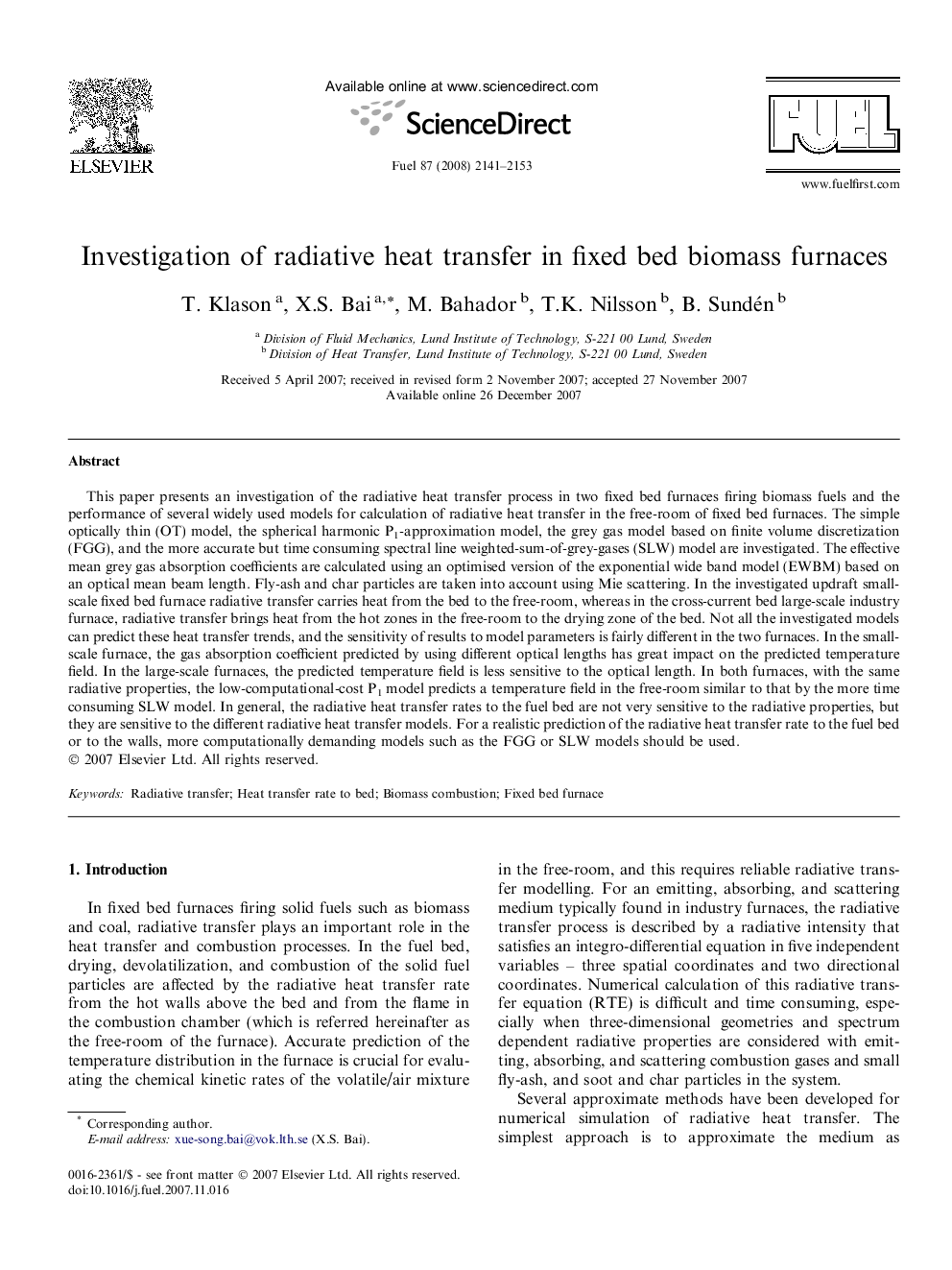| کد مقاله | کد نشریه | سال انتشار | مقاله انگلیسی | نسخه تمام متن |
|---|---|---|---|---|
| 208386 | 461248 | 2008 | 13 صفحه PDF | دانلود رایگان |

This paper presents an investigation of the radiative heat transfer process in two fixed bed furnaces firing biomass fuels and the performance of several widely used models for calculation of radiative heat transfer in the free-room of fixed bed furnaces. The simple optically thin (OT) model, the spherical harmonic P1-approximation model, the grey gas model based on finite volume discretization (FGG), and the more accurate but time consuming spectral line weighted-sum-of-grey-gases (SLW) model are investigated. The effective mean grey gas absorption coefficients are calculated using an optimised version of the exponential wide band model (EWBM) based on an optical mean beam length. Fly-ash and char particles are taken into account using Mie scattering. In the investigated updraft small-scale fixed bed furnace radiative transfer carries heat from the bed to the free-room, whereas in the cross-current bed large-scale industry furnace, radiative transfer brings heat from the hot zones in the free-room to the drying zone of the bed. Not all the investigated models can predict these heat transfer trends, and the sensitivity of results to model parameters is fairly different in the two furnaces. In the small-scale furnace, the gas absorption coefficient predicted by using different optical lengths has great impact on the predicted temperature field. In the large-scale furnaces, the predicted temperature field is less sensitive to the optical length. In both furnaces, with the same radiative properties, the low-computational-cost P1 model predicts a temperature field in the free-room similar to that by the more time consuming SLW model. In general, the radiative heat transfer rates to the fuel bed are not very sensitive to the radiative properties, but they are sensitive to the different radiative heat transfer models. For a realistic prediction of the radiative heat transfer rate to the fuel bed or to the walls, more computationally demanding models such as the FGG or SLW models should be used.
Journal: Fuel - Volume 87, Issues 10–11, August 2008, Pages 2141–2153